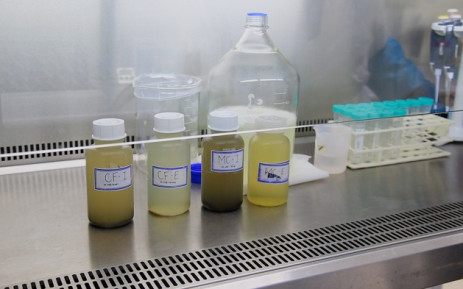The South African Medical Research Council (SAMRC) last year introduced a sewage-based early warning system for the coronavirus in some parts of the country.
CAPE TOWN - Health authorities have stressed the importance of rapidly detecting a rise in COVID-19 infections in communities, especially under level 1 of the national lockdown.
The South African Medical Research Council (SAMRC) last year introduced a sewage-based early warning system for the coronavirus in some parts of the country.
The council has been using this surveillance mechanism to help guide the response to the pandemic.
Western Cape health authorities can use the data from this wastewater surveillance mechanism to detect emerging COVID-19 hotspots.
Faeces of COVID-19 patients contain particles of the coronavirus’ genetic material.
At the Bellville Wastewater Treatment Works, Stellenbosch University Environmental Microbiology PhD student, Ludwig Bröcker, collects sewage samples coronavirus analysis and transports them to a laboratory.
“Raw wastewater is collected at the inlet of the wastewater treatment works... a sampling device is used to scoop the wastewater and pour it into a 500ml sample collection bottle..."
At the South African Medical Research Council’s laboratories, PhD candidate Noluxabiso Mangwana analyses the samples: “This project is about wastewater-based epidemiology... we monitor COVID-levels or SARS-CoV-2 the virus in wastewater. It comes here in a 500ml bottle of which we take and then analyse so that we can get the RNA that's expressed in the wastewater then after that it can be quantified using PCR."
Samples from 24 sewage plants across the Cape Town Metro and other regions are used to conduct the COVID-19 surveillance.
This detection mechanism is also rolled out in the Mopani and Vhembe Districts in Limpopo, the OR Tambo and Amathole Districts in the Eastern Cape, as well as in Gauteng.
Western Cape head of health doctor Keith Cloete on Sunday said they got valuable information out of this.
“It tells you the presence of viral RNA, but not only the presence... it also gives you a sense of volume of that presence. It's not that there is a presence of the virus, but it also tells you that there is a quantity of virus in the wastewater system.”
Interim director of the Biomedical, Research and Innovation Platform Professor Christo Muller explained the data is sent to the SAMRC’s Environmental Health Research Unit for spatial mapping.
“Spatial mapping is where the data that we provided the viral load, is converted to the actual population number per wastewater site and that produces these maps, which you can use to monitor the virus whether it's increasing or decreasing.”
WATCH: How your sewage helps identify levels of COVID in your community
Microbiology PhD candidate Noluxabiso Mangwana said this served as a guide for the health department on where to concentrate its testing and tracing rollout.
“From previous studies that were published, they show that the wastewater-based epidemiology, you could detect the RNA levels a week before clinical symptoms are detected.”
Scientists at the Genome Sequencing Centre are also testing for the emergence of possible new coronavirus strains and variants.
By Kevin Brandt
Original article available on Eyewitness News

